The margay is a small wild cat that looks like an ocelot. It can be found in Central and South America.
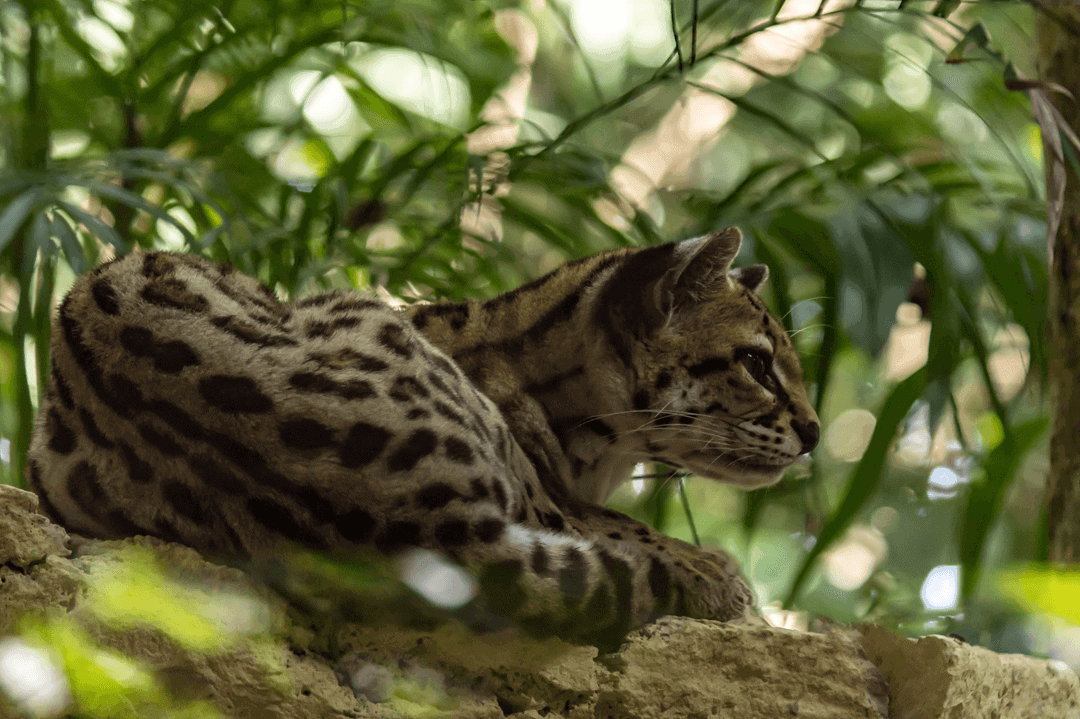
Scientific name: Leopardus wiedii
Conservation status: Near Threatened
Subspecies: There are 3 currently recognized subspecies:
- L. w. wiedii – (found south of the Brazilian state Amazonas)
- L. w. vigens – (found north of Amazonas)
- L. w. glauculus – (found in Central America)
Lineage: The margay belongs to the Ocelot lineage, which includes the Andean mountain cat, ocelot, pampas cat, oncilla northern cat, oncilla southern cat, Geoffroy’s cat and kodkod.
Meaning of the name
Margay comes for the Brazilian Portuguese word for “cat”
Interesting margay facts
- Known as a “tree ocelot” because of its climbing ability.
- Spends most of its life in trees.
- A highly skilled and able climber.
- Uses its tail to balance in trees.
- Like the clouded leopard and possibly the marbled cat, it can climb headfirst down trees
- Can jump up to 12 feet horizontally
- Can hang from a branch with one foot
- It scientific name was given in honor of Prince Maximiliem de Wied who discovered the margay in Brazil.
More about the margay
Physical characteristics
The margay has brown fur with rows of black or dark brown spots and streaks. The cat’s ears are black with a round white mark in the middle. The underbelly of the margay is a lighter off-white color. The margay’s tail has dark bands around it with a black tip.
| Margay | FROM | TO |
| Weight | 6.7 lbs. | 8.8 lbs. |
| Length | 19 in. | 31 in. |
| Tail | 13 in. | 20 in. |
Habitat (where the margay lives)
The margay inhabits numerous states in Mexico, especially where there are tropical lowlands. You can also find the Margay throughout Central America, and down as far as Brazil and Paraguay. The cat also inhabits Uruguay and northern Argentina. According to fossil remains dating back to the Pleistocene era, the margay once lived in the state of Texas in the U.S.A, Florida, and Georgia.
Hunting and prey (diet)
The margay is primarily a nocturnal cat. It is a skilled and agile climber who can grab branches with its paws. Most of its life is spent in the trees, preying on birds and monkeys. The cat also eats lizards, tree frogs, small mammals, grass, fruit and vegetation.
Reproduction and lifespan
Gestation lasts about 80 days, resulting in the birth of a single kitten. The kitten is usually born between March and June. Margays have lives more than 20 years in captivity. How long they live in the wild is unknown.
Conservation threats
The illegal hunting of margays until the 1990s resulted in a significant decline in their population. Other threats include habitat loss due to deforestation.
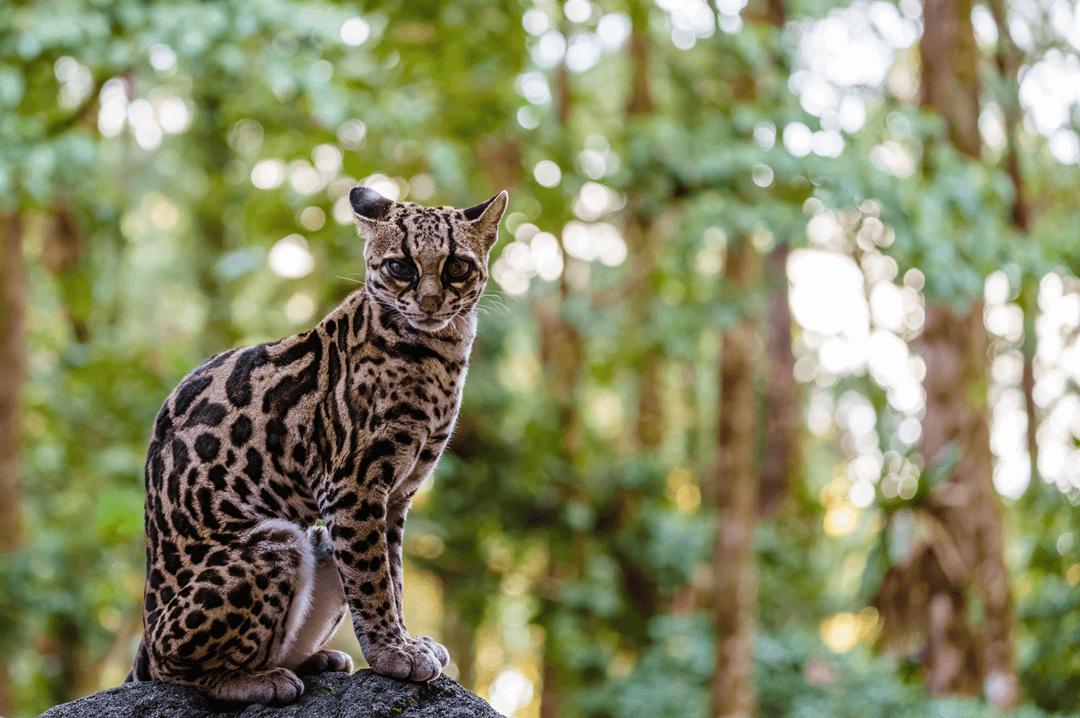
The margay in culture
Considered lucky in several cultures. In Brazil folkore it is considered a symbol of protection against bad luck and evil spirits. Also thought to be able to transform into other animals. Aztecs considered the margays messengers of the god of agriculture and fertility. In Mayan culture, they were associated with Chaac, the god of rain, thunder, lightning and agriculture.
Margay research and quotes
2011 Diet of margay, Leopardus wiedii, and jaguarundi, Puma yagouaroundi, (Carnivora: Felidae) in Atlantic Rainforest, Brazil | Bianchi, Gatti et al. “…the margay and jaguarundi fed mainly upon small vertebrates in the Vale do Rio Doce Natural Reserve and in the Sooretama Biological Reserve.”

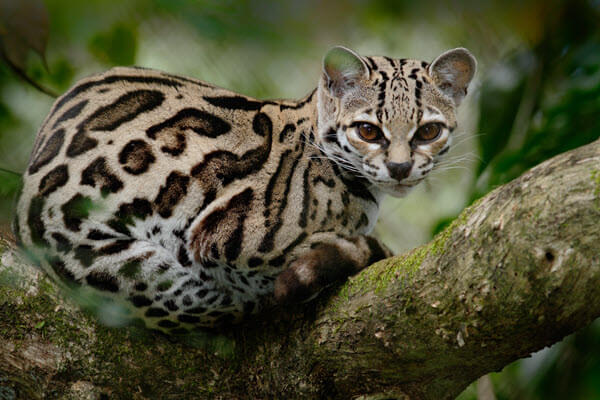


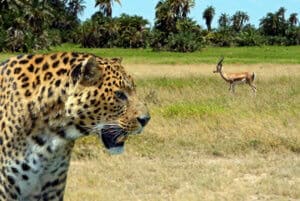




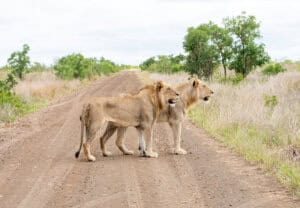



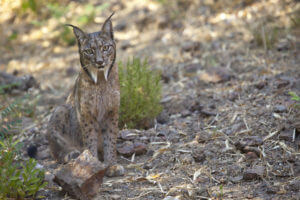




0 Comments